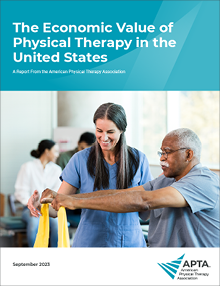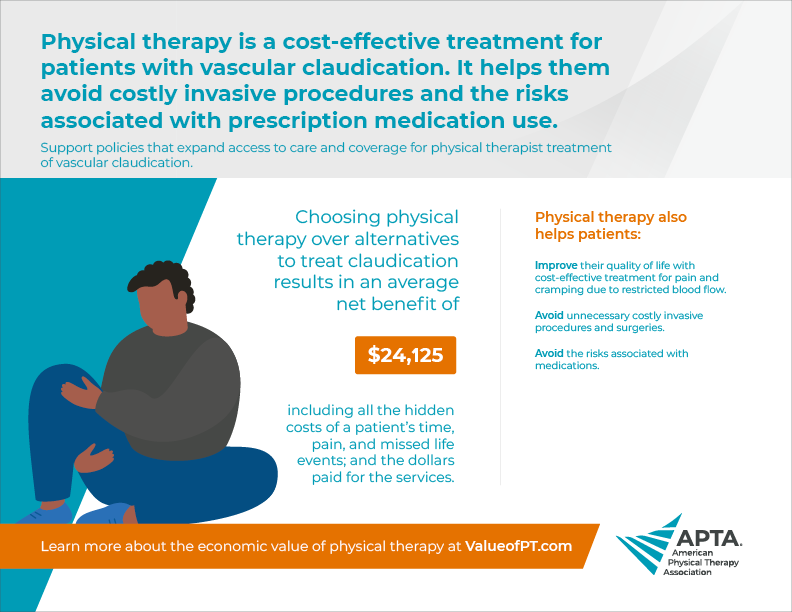Vascular claudication is a pain in the calves, thighs, or buttocks brought on by walking or other exercise and relieved by rest. This pain is a symptom of a more serious underlying condition known as peripheral arterial disease or PAD, that results from restricted arterial blood flow. Treatment typically addresses both reducing the risk of a cardiovascular event and improving the pain symptoms.
Our independent economic analysis examined the cost-effectiveness of physical therapist services plus optimal monitored medical care compared with monitored medical care alone to manage vascular claudication*. We discovered that physical therapy is a cost-effective treatment for patients with vascular claudication. It helps them avoid costly invasive procedures and the risks associated with prescription medication use.

What does this mean?
If you consider the dollar value assigned to the quality-of-life benefits from receiving treatment, minus the payments for services and all the hidden costs of a patient's time, pain, and missed life events; and compare the net result of each treatment, physical therapy comes out ahead by over $24,000.
Physical therapy also helps patients:
- Improve their quality of life with cost-effective treatment for pain and cramping due to restricted blood flow.
- Avoid unnecessary and costly invasive procedures and surgeries.
- Avoid the risks associated with medications.
Learn more about the economic value of physical therapy.
Download Report
*The analysis is based on the 2014 study "Cost-Effectiveness of Supervised Exercise, Stenting, and Optimal Medical Care for Claudication: Results From the Claudication: Exercise Versus Endoluminal Revascularization (CLEVER) Trial," by Reynolds and colleagues and published in the Journal of the American Heart Association.


